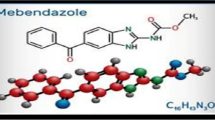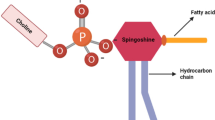Abstract
The continuous exposure of the colonic epithelium to high concentrations of bile acids may exert cytotoxic effects and has been related to pathogenesis of colon cancer. A better knowledge of the mechanisms by which bile acids induce toxicity is still required and may be useful for the development of new therapeutic strategies. We have studied the effect of deoxycholic acid (DCA) and chenodeoxycholic acid (CDCA) treatments in BCS-TC2 human colon adenocarcinoma cells. Both bile acids promote cell death, being this effect higher for CDCA. Apoptosis is detected after 30 min–2 h of treatment, as observed by cell detachment, loss of membrane asymmetry, internucleosomal DNA degradation, appearance of mitochondrial transition permeability (MPT), and caspase and Bax activation. At longer treatment times, apoptosis is followed in vitro by secondary necrosis due to impaired mitochondrial activity and ATP depletion. Bile acid-induced apoptosis is a result of oxidative stress with increased ROS generation mainly by activation of plasma membrane enzymes, such as NAD(P)H oxidases and, to a lower extent, PLA2. These effects lead to a loss of mitochondrial potential and release of pro-apoptotic factors to the cytosol, which is confirmed by activation of caspase-9 and -3, but not caspase-8. This initial apoptotic steps promote cleavage of Bcl-2, allowing Bax activation and formation of additional pores in the mitochondrial membrane that amplify the apoptotic signal.








Similar content being viewed by others
Abbreviations
- CA:
-
Cholic acid (3α,7α,12α-trihydroxy-5β-cholanoic acid)
- CDCA:
-
Chenodeoxycholic acid (3α,7α-dihydroxy-5β-cholanoic acid)
- DCA:
-
Deoxycholic acid (3α,12α-dihydroxy-5β-cholanoic acid)
- DCFH-DA:
-
2′,7′-Dichorofluorescein diacetate
- DPI:
-
Diphenyleneiodonium
- LCA:
-
Lithocholic acid (3α-hydroxy-5β-cholanic acid)
- LDH:
-
Lactate dehydrogenase
- MPT:
-
Mitochondrial transition permeability
- NAC:
-
N-acetyl-cysteine
- PARP:
-
Poly(ADP-ribose) polymerase
- PLA2 :
-
Phospholipase A2
- ROS:
-
Reactive oxygen species
- UDCA:
-
Ursodeoxycholic acid (3α,7β-dihydroxy-5β-cholanoic acid)
References
Hofmann AF, Hagey LR (2008) Bile acids: chemistry, pathochemistry, biology, pathobiology, and therapeutics. Cell Mol Life Sci 65:2461–2483
Monte MJ, Marín JJ, Antelo A, Vázquez-Tato J (2009) Bile acids: chemistry, physiology, and pathophysiology. World J Gastroenterol 15:804–816
Longpre JM, Loo G (2008) Protection of human colon epithelial cells against deoxycholate by rottlerin. Apoptosis 13:1162–1171
Stadler J, Stern HS, Yeung KS et al (1988) Effect of high fat consumption on cell proliferation activity of colorectal mucosa and on soluble faecal bile acids. Gut 29:1326–1331
Hofmann AF (1999) The continuing importance of bile acids in liver and intestinal disease. Arch Intern Med 159:2647–2658
Bernstein H, Bernstein C, Payne CM, Dvorakova K, Garewal H (2005) Bile acids as carcinogens in human gastrointestinal cancers. Mutat Res 589:47–65
Benedetti A, Alvaro D, Bassotti C et al (1997) Cytotoxicity of bile salts against biliary epithelium: a study in isolated bile ductule fragments and isolated perfused rat liver. Hepatology 26:9–21
Araki Y, Katoh T, Ogawa A et al (2005) Bile acid modulates transepithelial permeability via the generation of reactive oxygen species in the Caco-2 cell line. Free Radic Biol Med 39:769–780
Sola S, Brito MA, Brites D, Moura JJ, Rodrigues CM (2002) Membrane structural changes support the involvement of mitochondria in the bile salt-induced apoptosis of rat hepatocytes. Clin Sci (Lond) 103:475–485
Sokol RJ, Dahl R, Devereaux MW, Yerushalmi B, Kobak GE, Gumpricht E (2005) Human hepatic mitochondria generate reactive oxygen species and undergo the permeability transition in response to hydrophobic bile acids. J Pediatr Gastroenterol Nutr 41:235–243
Faubion WA, Guicciardi ME, Miyoshi H et al (1999) Toxic bile salts induce rodent hepatocyte apoptosis via direct activation of Fas. J Clin Invest 103:137–145
Higuchi H, Bronk SF, Takikawa Y et al (2001) The bile acid glycochenodeoxycholate induces trail-receptor 2/DR5 expression and apoptosis. J Biol Chem 276:38610–38618
Tsuchiya S, Tsuji M, Morio Y, Oguchi K (2006) Involvement of endoplasmic reticulum in glycochenodeoxycholic acid-induced apoptosis in rat hepatocytes. Toxicol Lett 166:140–149
Rosignoli P, Fabiani R, De Bartolomeo A, Fuccelli R, Pelli MA, Morozzi G (2008) Genotoxic effect of bile acids on human normal and tumour colon cells and protection by dietary antioxidants and butyrate. Eur J Nutr 47:301–309
Byrne AM, Foran E, Sharma R et al (2010) Bile acids modulate the Golgi membrane fission process via a protein kinase Ceta and protein kinase D-dependent pathway in colonic epithelial cells. Carcinogenesis 31:737–744
Pérez-Ramos P, Olmo N, Turnay J et al (2005) Effect of bile acids on butyrate-sensitive and -resistant human colon adenocarcinoma cells. Nutr Cancer 53:208–219
Olmo N, Turnay J, Lecona E et al (2007) Acquisition of resistance to butyrate induces resistance to luminal components and other types of stress in human colon adenocarcinoma cells. Toxicol In Vitro 21:254–261
Turnay J, Olmo N, Gavilanes JG, Benítez J, Lizarbe MA (1990) Establishment and characterization of a new human colon adenocarcinoma cell line: BCS-TC2. Cytotechnology 3:75–88
Olmo N, Turnay J, González de Buitrago G, López de Silanes I, Gavilanes JG, Lizarbe MA (2001) Cytotoxic mechanism of the ribotoxin alpha-sarcin. Induction of cell death via apoptosis. Eur J Biochem 268:2113–2123
López de Silanes I, Olmo N, Turnay J et al (2004) Acquisition of resistance to butyrate enhances survival after stress and induces malignancy of human colon carcinoma cells. Cancer Res 64:4593–4600
Navarro JM, Olmo N, Turnay J, Lopez-Conejo MT, Lizarbe MA (1997) Differentiation of BCS-TC2 human colon adenocarcinoma cells by sodium butyrate: increase in 5′-nucleotidase activity. Eur J Clin Invest 27:620–628
Lecona E, Barrasa JI, Olmo N, Llorente B, Turnay J, Lizarbe MA (2008) Upregulation of annexin A1 expression by butyrate in human colon adenocarcinoma cells: role of p53, NF-Y, and p38 mitogen-activated protein kinase. Mol Cell Biol 28:4665–4674
Guzmán-Aránguez A, Olmo N, Turnay J et al (2005) Differentiation of human colon adenocarcinoma cells alters the expression and intracellular localization of annexins A1, A2, and A5. J Cell Biochem 94:178–193
Weston CR, Balmanno K, Chalmers C et al (2003) Activation of ERK1/2 by deltaRaf-1:ER* represses Bim expression independently of the JNK or PI3 K pathways. Oncogene 22:1281–1293
Kivinen K, Kallajoki M, Taimen P (2005) Caspase-3 is required in the apoptotic disintegration of the nuclear matrix. Exp Cell Res 311:62–73
Boulares AH, Yakovlev AG, Ivanova V et al (1999) Role of poly(ADP-ribose) polymerase (PARP) cleavage in apoptosis. Caspase 3-resistant PARP mutant increases rates of apoptosis in transfected cells. J Biol Chem 274:22932–22940
Jin YH, Yoo KJ, Lee YH, Lee SK (2000) Caspase 3-mediated cleavage of p21WAF1/CIP1 associated with the cyclin A-cyclin-dependent kinase 2 complex is a prerequisite for apoptosis in SK-HEP-1 cells. J Biol Chem 275:30256–30263
Sayan BS, Sayan AE, Knight RA, Melino G, Cohen GM (2006) p53 is cleaved by caspases generating fragments localizing to mitochondria. J Biol Chem 281:13566–13573
Lamireau T, Zoltowska M, Levy E et al (2003) Effects of bile acids on biliary epithelial cells: proliferation, cytotoxicity, and cytokine secretion. Life Sci 72:1401–1411
Pérez MJ, Briz O (2009) Bile-acid-induced cell injury and protection. World J Gastroenterol 15:1677–1689
Katona BW, Anant S, Covey DF, Stenson WF (2009) Characterization of enantiomeric bile acid-induced apoptosis in colon cancer cell lines. J Biol Chem 284:3354–3364
Powell AA, LaRue JM, Batta AK, Martinez JD (2001) Bile acid hydrophobicity is correlated with induction of apoptosis and/or growth arrest in HCT116 cells. Biochem J 356:481–486
Payne CM, Weber C, Crowley-Skillicorn C et al (2007) Deoxycholate induces mitochondrial oxidative stress and activates NF-kappaB through multiple mechanisms in HCT-116 colon epithelial cells. Carcinogenesis 28:215–222
Wachs FP, Krieg RC, Rodrigues CM et al (2005) Bile salt-induced apoptosis in human colon cancer cell lines involves the mitochondrial transmembrane potential but not the CD95 (Fas/Apo-1) receptor. Int J Colorectal Dis 20:103–113
Yui S, Saeki T, Kanamoto R, Iwami K (2005) Characteristics of apoptosis in HCT116 colon cancer cells induced by deoxycholic acid. J Biochem 138:151–157
Sawai H, Domae N (2008) Release of cytochrome c from mitochondria precedes Bax translocation/activation in Triton X-100-induced apoptosis. Leuk Res 32:445–453
Yerushalmi B, Dahl R, Devereaux MW, Gumpricht E, Sokol RJ (2001) Bile acid-induced rat hepatocyte apoptosis is inhibited by antioxidants and blockers of the mitochondrial permeability transition. Hepatology 33:616–626
Akare S, Martinez JD (2005) Bile acid induces hydrophobicity-dependent membrane alterations. Biochim Biophys Acta 1735:59–67
Jean-Louis S, Akare S, Ali MA, Mash EA Jr, Meuillet E, Martinez JD (2006) Deoxycholic acid induces intracellular signaling through membrane perturbations. J Biol Chem 281:14948–14960
Reinehr R, Becker S, Eberle A, Grether-Beck S, Haussinger D (2005) Involvement of NADPH oxidase isoforms and Src family kinases in CD95-dependent hepatocyte apoptosis. J Biol Chem 280:27179–27194
Kirsch DG, Doseff A, Chau BN et al (1999) Caspase-3-dependent cleavage of Bcl-2 promotes release of cytochrome c. J Biol Chem 274:21155–21161
Rodrigues CM, Ma X, Linehan-Stieers C, Fan G, Kren BT, Steer CJ (1999) Ursodeoxycholic acid prevents cytochrome c release in apoptosis by inhibiting mitochondrial membrane depolarization and channel formation. Cell Death Differ 6:842–854
Zuo Y, Xiang B, Yang J et al (2009) Oxidative modification of caspase-9 facilitates its activation via disulfide-mediated interaction with Apaf-1. Cell Res 19:449–457
Kim JS, He L, Lemasters JJ (2003) Mitochondrial permeability transition: a common pathway to necrosis and apoptosis. Biochem Biophys Res Commun 304:463–470
Acknowledgments
We are thankful to the staff from the Microscopy and Flow Cytometry Center from the Complutense University of Madrid for their skillful assistance. This work was supported by grants BFU2005-02671 and BFU2008-04758 from the DGES (Spain).
Conflict of interest
None.
Author information
Authors and Affiliations
Corresponding author
Rights and permissions
About this article
Cite this article
Barrasa, J.I., Olmo, N., Pérez-Ramos, P. et al. Deoxycholic and chenodeoxycholic bile acids induce apoptosis via oxidative stress in human colon adenocarcinoma cells. Apoptosis 16, 1054–1067 (2011). https://doi.org/10.1007/s10495-011-0633-x
Published:
Issue Date:
DOI: https://doi.org/10.1007/s10495-011-0633-x




